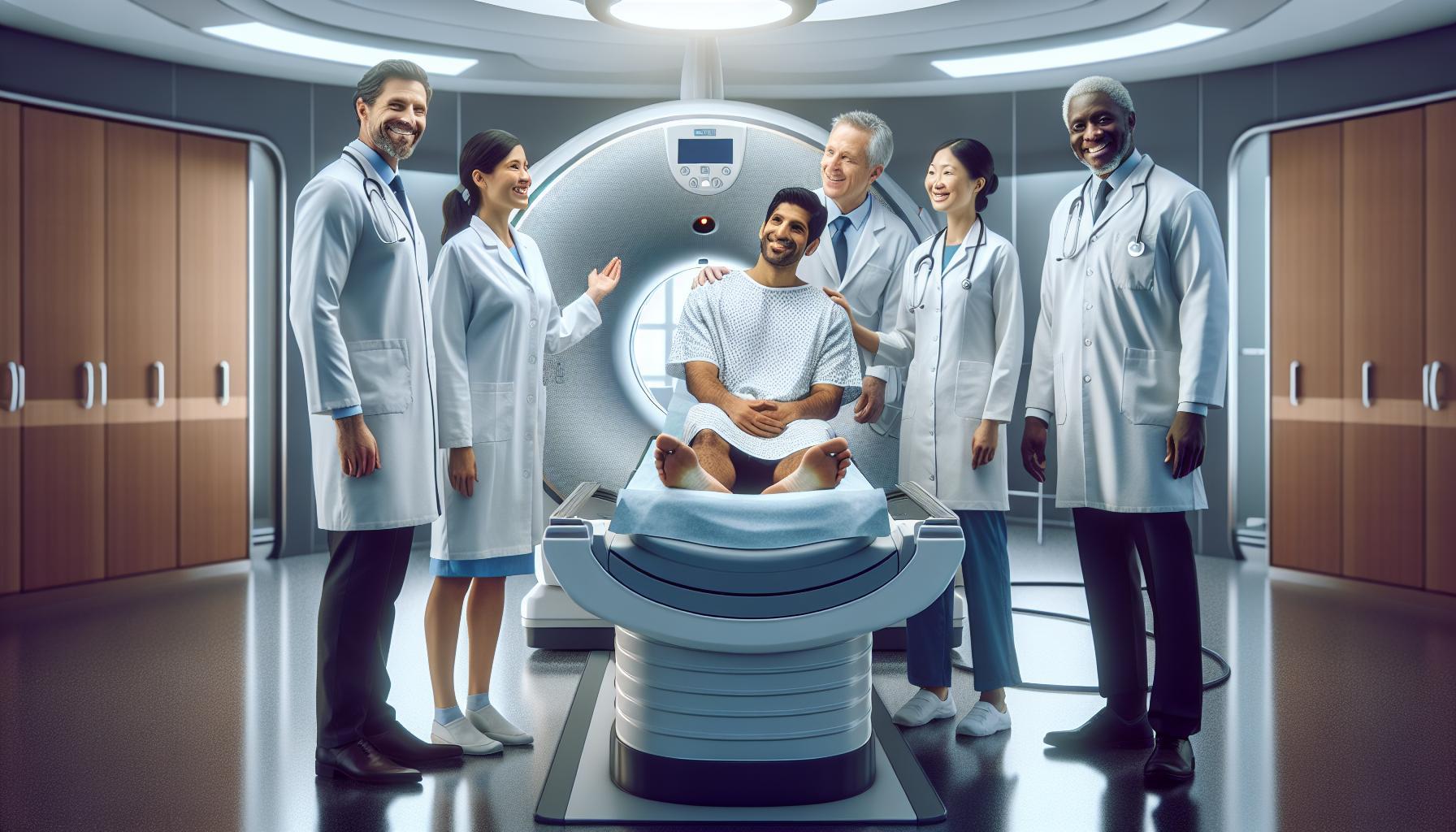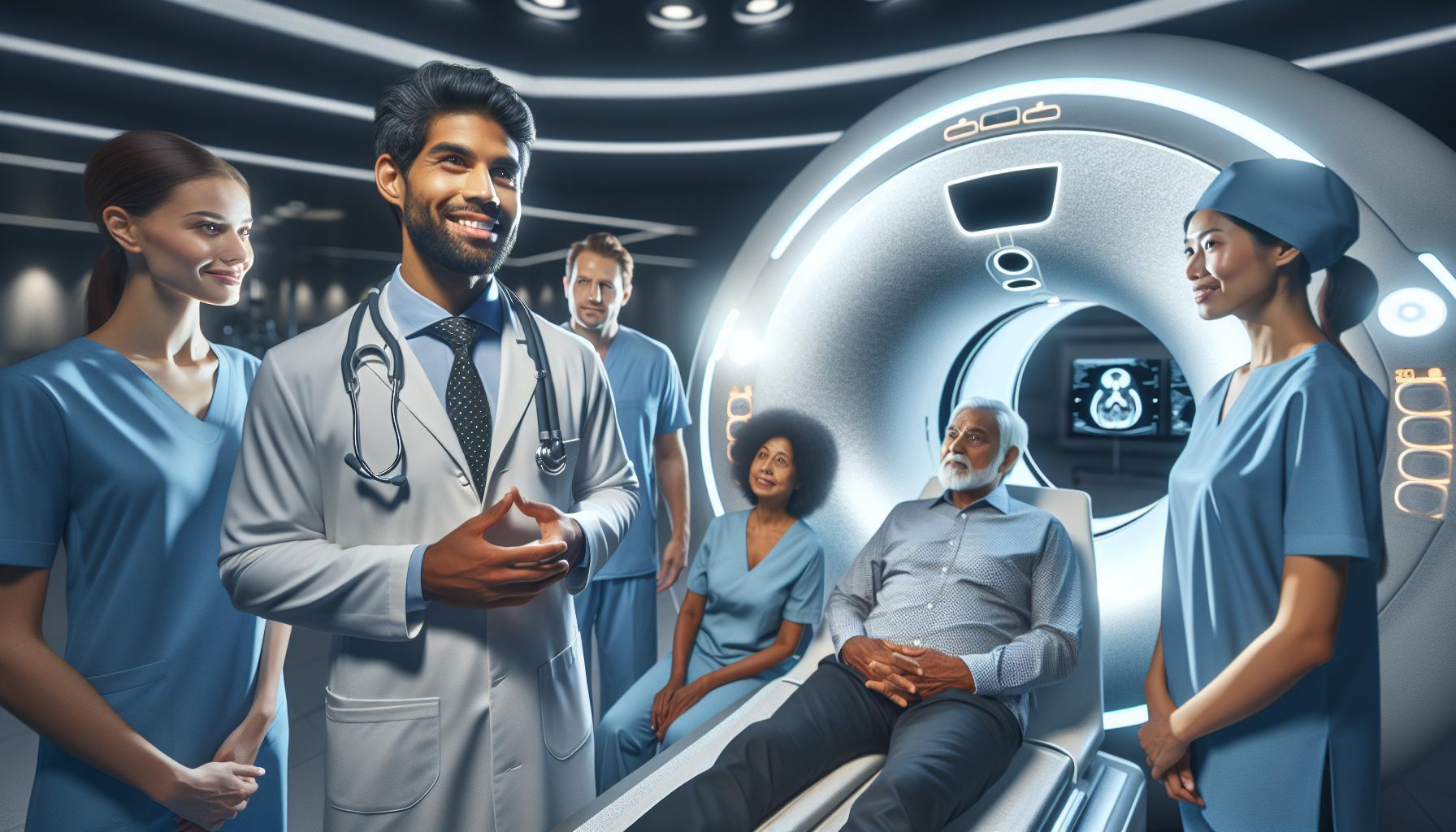When faced with a medical emergency, understanding the timeline for CT scan results can be crucial. CT scans are vital diagnostic tools that provide detailed images of the body, helping healthcare providers to promptly identify injuries or conditions that standard X-rays might miss. However, knowing how long you might wait for your results can ease anxiety and assist in navigating the overall treatment process.
In the fast-paced environment of an emergency room, the anticipation of receiving results can be overwhelming. Typically, results from a CT scan taken in the ER can be communicated anywhere from 30 minutes to several hours, depending on various factors. For patients seeking clarity on their conditions, understanding this timeline can alleviate concerns and allow for more informed discussions with medical staff. Continue reading to explore the nuances of CT scan results in the emergency setting and discover what you can expect during this critical time.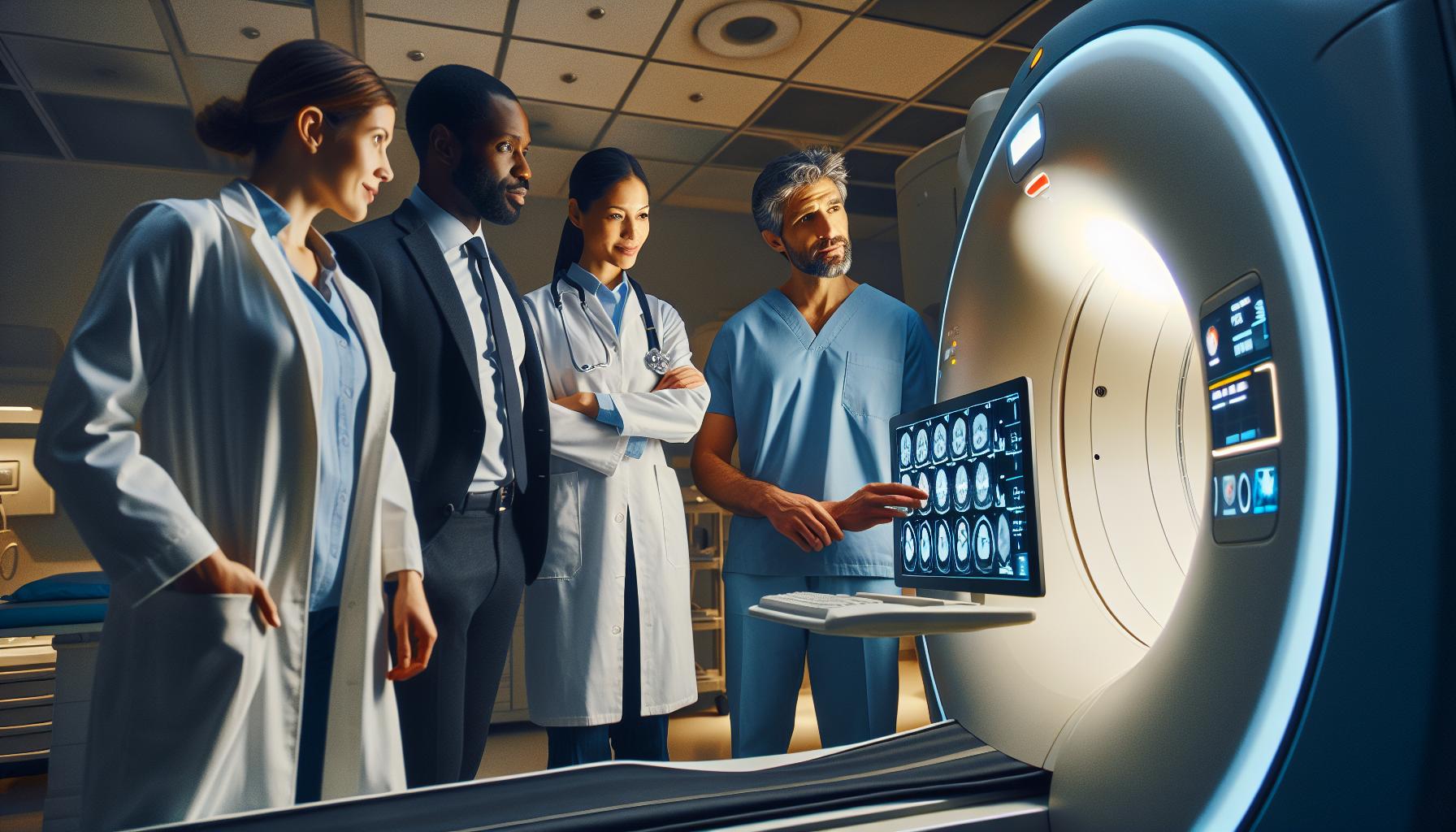
How CT Scans Work in the Emergency Room
The use of CT scans in the emergency room is a critical tool for diagnosing a wide range of medical conditions, often in urgent situations. These advanced imaging tests provide detailed cross-sectional images of the body, allowing healthcare providers to identify internal injuries or diseases that may not be visible through standard X-rays. CT scans can quickly reveal essential information about conditions such as traumatic injuries, strokes, or signs of cancer, answering crucial questions that influence immediate patient care.
When you arrive at the emergency room and a CT scan is deemed necessary, the process typically follows a set protocol to ensure efficiency and safety. First, you will be asked a series of questions about your medical history and any current symptoms. After this, a healthcare professional will guide you through the preparation, which may include instructions regarding fasting or contrast material if needed. The CT scan itself usually involves lying on a table that slides into the CT machine, with images being captured as the machine rotates around your body. This part of the process generally takes just a few minutes, but the entire experience, including preparation and waiting time, can vary significantly depending on the hospital’s protocols and the urgency of your condition.
While you’re likely eager to receive the results of your CT scan, the waiting period can vary. In some cases, especially in emergency settings, results may be available within an hour or two. However, factors like the complexity of the images, the number of cases being handled by the radiology team, and the specific protocols of the hospital can affect this timeline. It’s important to communicate with healthcare providers during this time; they can offer clarity on what to expect and keep you updated on your case’s status. Understanding the CT scan process will help alleviate anxiety, knowing that this method provides essential insights that guide your treatment plan.
At the core of your experience in the emergency room is a dedicated team working to provide timely and effective care. By comprehending how CT scans operate and the reasoning behind their use, you can feel more at ease, knowing that this advanced technology plays a vital role in diagnosing and addressing your health concerns promptly.
Understanding the CT Scan Process
The CT scan process is designed to be efficient and straightforward, especially in emergency situations where time is of the essence. When a CT scan is recommended in the emergency room, it typically begins with a brief assessment of your medical history and current symptoms. This initial step helps the healthcare team understand your condition and tailor the imaging process to your specific needs.
Once you’ve completed this assessment, the next phase involves preparing for the scan. Depending on the reasons for the CT scan, you might receive specific instructions, such as fasting for several hours or drinking a contrast material to enhance the images. The contrast helps to highlight certain areas of your body, making it easier for doctors to identify any abnormalities. Following preparation, the actual scanning process only takes a few minutes. You will lie on a table that slides through the CT machine, which takes multiple X-ray images from different angles. These images are compiled by a computer to create detailed cross-sectional views of your internal structures.
Given the advanced technology used in CT scans, results can often be generated relatively quickly, usually within an hour or two in urgent care settings. However, various factors can affect how soon you receive your results, including the complexity of the scans and the volume of cases that need to be processed by radiologists. Rest assured, the medical team will keep you informed throughout the process and can answer any questions or concerns you may have as you await the results.
can significantly ease any anxiety you might feel. Knowing that this imaging technique is a crucial tool that assists healthcare providers in diagnosing a variety of conditions helps underscore its importance to your overall care. Always feel empowered to ask questions and communicate with your healthcare team; they are there to provide support and clarity as you navigate your situation.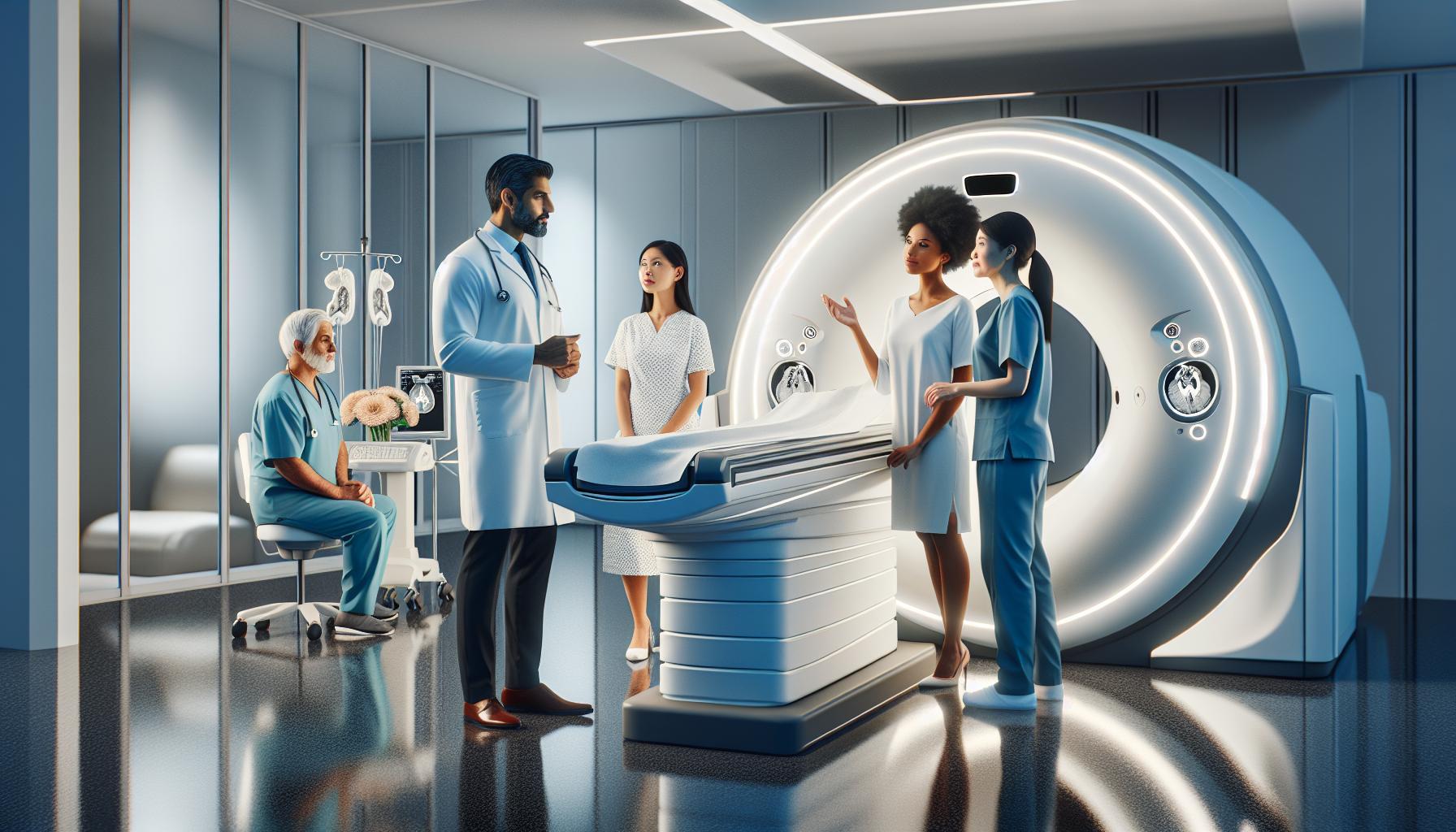
Average Wait Times for CT Scan Results
Receiving timely results from a CT scan is crucial for making informed decisions about your health, especially in an emergency setting. Generally, patients can expect to receive their CT scan results within 24 to 48 hours; however, in urgent care scenarios, results may become available even sooner, often within a few hours or by the end of the day. The rapid advancement in imaging technology streamlines this process, allowing for quicker analysis and interpretation of the scans.
There are several variables that impact the wait time for results. For example, the immediacy of the situation can dictate how quickly results are processed. In an emergency room, scans that are critical for immediate treatment may be prioritized. Additionally, the complexity of the scan itself plays a significant role; simple scans may yield results faster than more intricate ones, which require detailed analysis. The workload of the radiology department also affects the turnaround time-if the department is experiencing high volume, there might be delays in getting results due to the sheer number of cases they are handling.
It’s important to remain proactive and communicate with your healthcare team as you await results. They can inform you about the anticipated timeframe and any potential delays. Your understanding of this process can help alleviate anxiety, reassuring you that healthcare professionals are diligently working to provide the necessary information for your care. If you have specific concerns or feel your condition may be worsening, do not hesitate to reach out to your healthcare provider for guidance.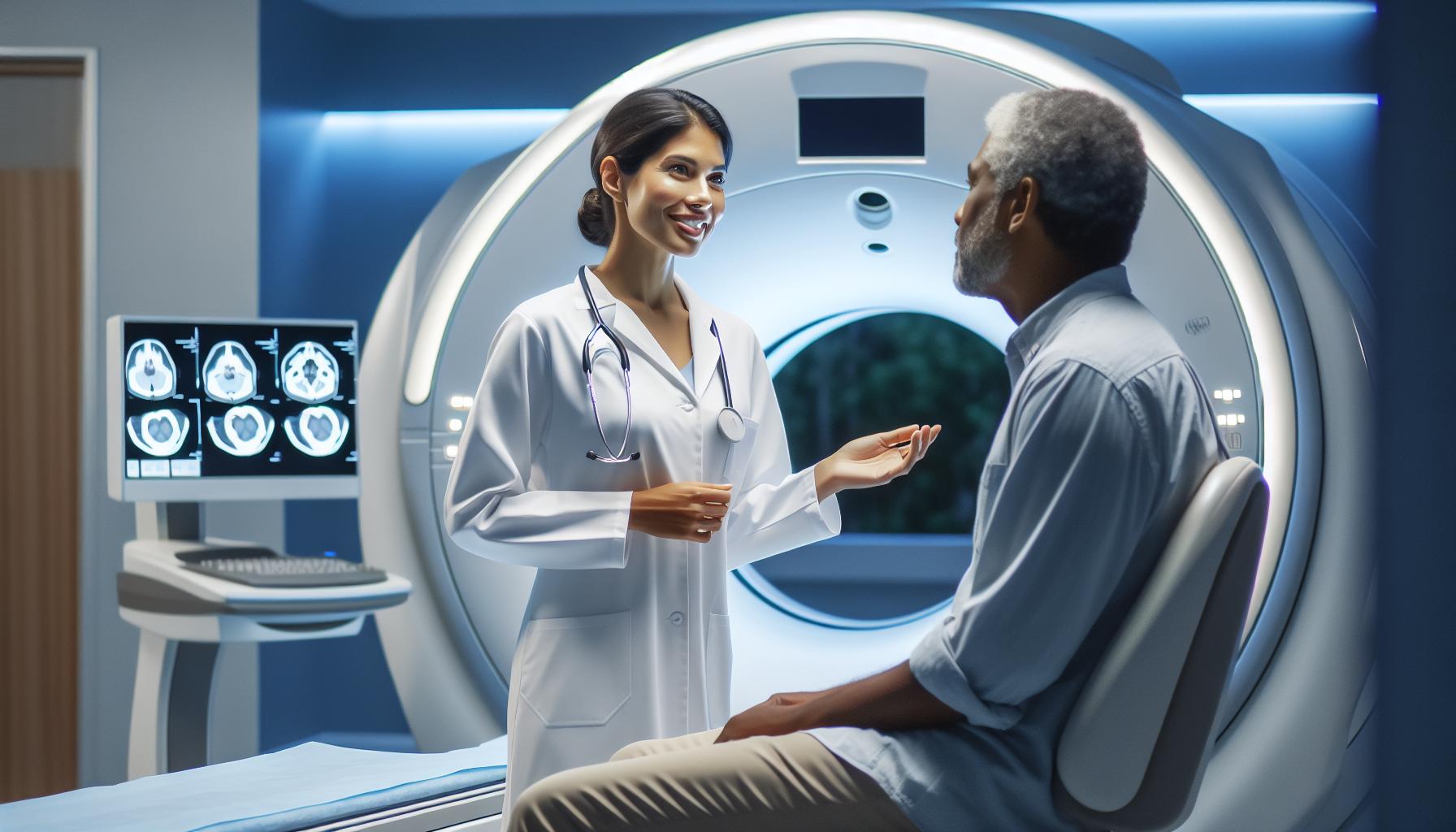
Factors Affecting CT Scan Result Times
The efficiency of a CT scan’s result delivery can significantly impact patient care, especially in emergency situations. Numerous factors contribute to how quickly results are obtained, and understanding these elements can ease anxieties.
One of the primary factors affecting result times is the urgency of the situation. In an emergency room, scans essential for immediate treatment are prioritized over non-urgent cases. For instance, a CT scan performed for a suspected stroke may be reviewed more rapidly than a scan conducted for a less time-sensitive concern. This prioritization ensures that critical cases receive the prompt attention they require.
Another consideration is the complexity of the scan itself. Simple scans that can be reviewed quickly may yield results within a matter of hours, while more complicated scans necessitate detailed evaluation and interpretation by radiologists, potentially extending the wait time. The workload of the radiology department also plays a crucial role; during periods of high patient volume, delays in results may occur as staff manage numerous cases simultaneously. Patients should remain aware that their scan results can be affected both by medical urgency and staffing levels within the department.
Additionally, the method of communication between healthcare providers can shape how and when results are communicated. The relationship and workflow between the radiology team and the treating physician can influence the speed of information relay. Having a proactive dialogue with your healthcare team can clarify anticipated wait times and alleviate stress as you await important health information. Remember, engaging with your providers will not only keep you informed but also empower you in your healthcare journey, enabling the establishment of a more supportive and responsive care experience.
What to Expect During a CT Scan
During a CT scan, you will be taken to a specially equipped room designed to ensure your comfort and safety throughout the procedure. The scan itself is relatively quick, often lasting only 10 to 30 minutes, depending on the specific area being examined. Before the scan starts, a radiologic technologist will explain the process to you, addressing any concerns you may have. This is a great opportunity to ask questions and understand what to expect.
You will be asked to lie down on a narrow table that slides into the CT scanner, which looks like a large doughnut. It’s important to remain still during the scan, as movement can affect the quality of the images. Some scans may require an injection of contrast material, which helps to highlight certain areas in your body for clearer imaging. If contrast material is used, you might feel a warm sensation as it’s injected, but this is entirely normal. Make sure to inform your healthcare team if you have any allergies, especially to iodine, as that may affect the use of contrast.
Throughout the scan, the technologist will monitor you from an adjacent room, and you will be able to communicate with them via intercom. It’s natural to feel some anxiety during this time, particularly in an emergency setting, but the staff is trained to ensure a smooth experience. They will guide you through each step and reassure you of your safety. Once the imaging is complete, you’ll be able to return to your regular activities, unless instructed otherwise, as CT scans typically do not require recovery time.
When the scan is finished, the images will be sent to a radiologist for interpretation. This is a crucial step, as the radiologist will analyze the images and provide a report to your healthcare provider, who will discuss the results with you. Keep in mind that while you may be anxious to receive your results, the team is dedicated to ensuring you receive the most accurate and thorough analysis possible, and they are there to support you throughout the process.
Preparing for Your CT Scan at the ER
Preparing for a CT scan in the emergency room can be a crucial step in ensuring your diagnosis is accurate and timely. Knowing what to expect can alleviate some anxiety associated with the procedure. CT scans are incredibly effective tools that provide a detailed view of your body’s internal structures, assisting doctors in making life-saving decisions. Here’s what you need to know to prepare effectively.
Understand the Purpose and Process
First and foremost, understanding why you need a CT scan can help ease your nerves. A healthcare provider may recommend this imaging technique to assess injuries, detect diseases, or guide treatment plans based on your current health status. Once it’s determined that a CT scan is necessary, the process will typically unfold swiftly; however, being prepared can save valuable time.
What to Communicate
Before the scan, openly communicate with your healthcare team. They will likely ask about any allergies, especially to iodine or contrast materials, as these can affect the imaging process. If you have any medical conditions that may influence the scan, such as kidney problems, be sure to share this information. Understanding the full picture will assist your medical team in providing the safest and most efficient care.
Arrive with the Right Mindset
When you arrive at the emergency room, being mentally prepared can enhance your overall experience. Arriving with a calm mindset-perhaps by employing deep-breathing exercises-can help reduce anxiety. Consider bringing a friend or family member for support, if allowed, to help keep you feeling comfortable. The staff is trained to support you; don’t hesitate to ask questions about the procedure or express any concerns-knowledge can be soothing.
Practical Steps to Take
- Clothing: Wear loose-fitting clothes without metal fasteners, as you might need to change into a hospital gown. Avoid jewelry to streamline the process.
- Dietary Considerations: Depending on whether contrast material will be used, you may be instructed to avoid food and drinks for a few hours before the scan. Be sure to follow these guidelines closely for optimal results.
- Follow-up Plans: Prepare for what happens after the scan as well. Discuss with your healthcare provider how and when you’ll receive your results, as this can help alleviate uncertainty.
Following these steps can significantly reduce the stress surrounding your CT scan and ensure you are well-prepared for the procedure. Remember, this imaging technique is a pivotal step in understanding your health better, and the medical team is there to support you through every phase of the process.
Communicating with Healthcare Providers
In the fast-paced environment of the emergency room, effective communication with your healthcare providers can significantly influence your overall experience and the timeliness of your care. Knowing how to interact with the medical team not only helps ensure that your specific needs are met but also empowers you to participate actively in your healthcare journey. When you’re informed and engaged, it can alleviate some of the anxiety that naturally comes with medical procedures.
When you arrive at the ER, be prepared to share detailed information about your medical history. This includes discussing any pre-existing conditions, medications you are taking, and allergies, especially to iodine or contrast materials often used during CT scans. For example, if you suffer from kidney issues, it’s crucial to inform the medical staff, as this can affect the choice of contrast medium. The more context the healthcare team has, the better they can tailor their approach to your situation. Don’t hesitate to ask questions if you’re unsure about any aspect of the procedure or what to expect.
Additionally, understanding how results are communicated can ease your mind. Typically, after your CT scan is completed, the images will be reviewed by a radiologist, who will generate a report. This process can take anywhere from a few hours to a day, depending on the complexity of your case and the hospital workload. Ask your healthcare provider when and how you’ll receive your results; knowing how to interpret the timeline can help you manage your anxiety. If you have any concerns about when you might hear back or what follow-up steps might be needed, clarify these before leaving the emergency department.
Lastly, practicing effective communication means being assertive about your needs while remaining receptive to medical advice. If you’re feeling anxious or uncertain, expressing these feelings can prompt your healthcare providers to offer additional support, whether it’s through reassurance or providing more detailed explanations about the CT scan process. Remember, the medical team is there not only to deliver care but also to support you emotionally through your experience.
Navigating Your Healthcare Experience
In an emergency room, can be overwhelming, especially when it comes to understanding the timeline of CT scan results. Knowing that the average wait time for CT scan results can range from a few hours to a day can help set your expectations. This variability largely depends on factors such as the complexity of your case and the overall workload of the hospital at the time.
Following your CT scan, the images are evaluated by a radiologist who produces a report based on their analysis. Communication is key here; before leaving the emergency department, inquire about when and how you will receive your results. This proactive approach not only helps reduce anxiety but also empowers you to stay informed about your health. Ask questions like, “What is the expected timeline for interpreting my results?” and “Will my healthcare provider discuss the results with me directly?”
Additionally, understanding the factors that can influence the turnaround time of your results can further ease any concerns you may have. In high-demand environments like emergency rooms, workload variations might mean some reports are expedited while others are not. If your condition is serious or requires urgent attention, be assured that the medical team will prioritize your case to ensure you receive timely care.
Finally, it’s vital to remain engaged during this process. If you have lingering questions or feel anxious about the time frame, don’t hesitate to express your concerns to your healthcare providers. Their responsiveness not only provides clarity but also solidifies your role as an active participant in your healthcare journey. By staying informed and engaged, you can better navigate your healthcare experience during such a critical time.
Tips for Managing Anxiety Before a CT Scan
Undergoing a CT scan can be a nerve-wracking experience, especially in the bustling environment of an emergency room. It’s perfectly natural to feel anxious about the scan itself, especially when unfamiliar medical procedures are involved. However, there are several effective strategies to help you manage this anxiety before your appointment, enabling you to approach the procedure with a calmer mindset.
Start by communicating openly with the healthcare team. Let your doctor or the CT technologist know about your concerns or any previous experiences that have caused anxiety. They are trained to help patients feel comfortable and may be able to offer a mild sedative if necessary, especially for those with a history of anxiety or claustrophobia. Understanding the purpose of the CT scan and what to expect can also reduce fear. Ask questions like, “How long will the scan take?” and “What should I focus on during the procedure?” Knowledge often alleviates worries by dispelling myths and clarifying expectations.
Consider practicing breathing exercises or mindfulness techniques before and during the scan. Slow, deep breaths can significantly lower stress levels, and visualizing a peaceful environment can help occupy your mind during the procedure. Some patients find that closing their eyes and focusing on their breathing or an image of a favorite place can make the experience feel less daunting. Furthermore, bringing a supportive friend or family member can provide comfort, as having a familiar face nearby often eases anxiety and creates a sense of security.
It may also help to prepare mentally by familiarizing yourself with the CT scan process. Knowing that the scan is quick and generally painless can help to alleviate fears of discomfort. Try to shift your focus from what you’re anxious about to the positive outcome of the scan, which is a step toward better understanding your health. Remember, these procedures are routine, and medical professionals are there to ensure your comfort and well-being. By taking these proactive steps, you can approach your CT scan with greater confidence and peace of mind.
Interpreting Your CT Scan Results
Understanding the results of a CT scan can feel like navigating a complex maze, especially in the high-pressure environment of an emergency room. The moment the technologist informs you that your scan is complete, it’s natural to be eager for answers. Keep in mind that interpreting these images is a meticulous process that begins shortly after the scan is done.
The Interpretation Process
When a CT scan is performed, highly trained radiologists analyze the images to identify any abnormalities or diseases. This process typically involves examining cross-sectional views of the body to detect issues such as fractures, tumors, or internal bleeding. The urgency of your medical condition can significantly affect how quickly your results are interpreted and communicated. In emergency situations, radiologists often prioritize scans based on the patient’s condition, so critical findings may be reported to the care team almost immediately, while less urgent cases may take longer to finalize.
Typical Wait Times for Results
Average wait times for CT scan results can vary widely depending on several factors, including the complexity of the images, the hospital’s specific protocols, and current patient load. Generally, in emergency settings, you can expect initial findings to be available within a few hours-often within 30 minutes to 2 hours for urgent cases. However, detailed reports that include comprehensive analysis may take longer, usually between 24 to 48 hours. It’s crucial to communicate with your healthcare team about when you might expect to hear results, as they can provide the most accurate time frame based on their experience and institutional protocols.
Communicating Your Results
After your images have been analyzed, your healthcare provider will discuss the results with you. They will explain any findings in clear terms and outline the next steps that may be needed, whether that’s further testing, treatment plans, or follow-up appointments. If anything about the results is unclear to you, don’t hesitate to ask questions. Understanding your health is essential, and your medical team is there to support you in navigating this process.
Ultimately, while the wait for your results can be anxious, try to focus on the reasons for your scan. CT scans are designed to provide critical information swiftly and accurately, enabling your medical team to make informed decisions about your care. By remaining engaged and informed, you empower yourself with the knowledge necessary for your recovery journey.
Follow-Up After Your CT Scan
Receiving the results of your CT scan can feel like an emotional rollercoaster. Once you’ve undergone the scan, the awaiting period can be filled with anxiety and uncertainty. It’s important to understand that follow-up care and communication are vital aspects of your healthcare journey, helping to clarify what the results mean and what steps are necessary moving forward.
After your scan, your healthcare provider will typically follow up with you to discuss the findings. This may occur in person, via a phone call, or through a secure online platform. During this conversation, they will explain the results, highlight any abnormal findings, and outline potential next steps. It’s crucial to prepare for these discussions by considering what questions you may have regarding your health, treatment options, or the implications of the scan results. Don’t hesitate to voice any concerns or ask for clarifications; understanding your results is essential for informed decision-making about your care.
In some instances, follow-up appointments may be required for further testing or evaluation based on your CT scan results. These appointments are an opportunity for your healthcare team to delve deeper into any findings and develop a tailored treatment plan. If additional tests are recommended, ask your provider about the reasons for these tests and what they will entail. This proactive approach ensures that you remain engaged in your health care process and assists in alleviating some of the anxiety that may arise from uncertainty.
Remember, it’s not uncommon to feel overwhelmed by medical information or the decisions that come with a health concern. Lean on your healthcare providers for support; they are trained to guide you through this process. By fostering a collaborative relationship with your medical team, you hone the ability to navigate your health journey with confidence and clarity, leading to better outcomes.
When to Seek Additional Medical Attention
Receiving a CT scan can be a pivotal moment in your healthcare journey, particularly in emergency situations where timely interventions can greatly alter outcomes. However, understanding can be equally crucial, especially if you experience certain symptoms or receive specific results from your scans.
If you begin to experience new or worsening symptoms following your CT scan, it is important to seek medical advice promptly. Symptoms such as severe abdominal pain, chest pain, difficulty breathing, or any sudden changes in your health status should never be ignored. These could indicate complications or underlying issues that were not previously identified, warranting immediate reassessment. Furthermore, if you are informed about any abnormal findings in your results, discuss them thoroughly with your healthcare provider to understand the implications and decide if further action is necessary.
It’s also essential to be aware of the type of follow-up care recommended by your provider based on your CT scan results. If your healthcare provider suggests additional tests, scans, or specialist referrals, don’t hesitate to communicate any concerns about the necessity or urgency of these recommendations. Your proactive involvement will empower you to better navigate your health care and ensure you receive appropriate and timely interventions.
Additionally, consider seeking a second opinion if you feel uncertain about your diagnosis or the suggested treatment plan. This can provide you with reassurance and possibly alternative options that might address your concerns more effectively. Remember, your well-being is paramount, and advocating for yourself is a vital part of managing your health journey. Always maintain open lines of communication with your healthcare providers, as they are there to support and guide you through each step.
Frequently asked questions
Q: How long does it take to get CT scan results in the ER?
A: Typically, CT scan results in the emergency room can take anywhere from 30 minutes to a few hours, depending on the urgency and the number of scans being processed. Medical professionals prioritize cases based on severity, which can affect wait times.
Q: What factors can affect the wait time for CT scan results in the ER?
A: Factors affecting wait time include the hospital’s current patient load, the specific type of CT scan performed, and the availability of radiologists to interpret the images. Urgent cases generally receive quicker attention [1[1].
Q: Can you ask for a status update on your CT scan results in the ER?
A: Yes, patients can and should ask healthcare providers for updates on their CT scan results. Keeping open communication can help alleviate anxiety and provide clarity on the expected timeline [1[1].
Q: Will I receive my CT scan results immediately in an emergency situation?
A: While initial findings might be provided shortly after the scan, detailed results and interpretations may take additional time. Radiologists typically interpret scans after the images are captured and filtered [3[3].
Q: What types of conditions can a CT scan in the ER help diagnose?
A: CT scans can identify various conditions such as injuries, bleeding, infections, or other internal issues like congestive heart failure and respiratory problems [3[3].
Q: Is it normal to feel anxious waiting for CT scan results in the ER?
A: Yes, it is completely normal to feel anxious while waiting for CT scan results. Healthcare professionals are accustomed to this and can provide support and information to help manage anxiety effectively [1[1].
Q: What happens if the CT scan results indicate an emergency condition?
A: If a CT scan reveals an urgent issue, medical staff will act quickly to initiate appropriate treatment or interventions. You will typically be informed as soon as critical findings are available to ensure your care is prioritized waiting times vary and that healthcare providers will communicate clearly. It can also assist to familiarize yourself with what to expect regarding follow-up information after your CT scan [1[1].
Feel free to explore further into each section, especially in understanding the CT scan process to navigate your healthcare experience better!
In Conclusion
Understanding the timeline for CT scan results in the emergency room can be crucial for your peace of mind. Typically, results can take anywhere from a few minutes to several hours, depending on the circumstances and the complexity of the case. To ensure you’re well-informed, delve into our articles on the CT scan procedures and what to expect during imaging tests for more comprehensive insights.
If you have lingering concerns or questions about your experience, consider reaching out to a healthcare professional for personalized advice. Don’t forget to subscribe to our newsletter for updates and tips on navigating medical procedures, or explore our health resources to empower your medical journey. Your comfort and understanding are paramount, and we’re here to guide you every step of the way!




